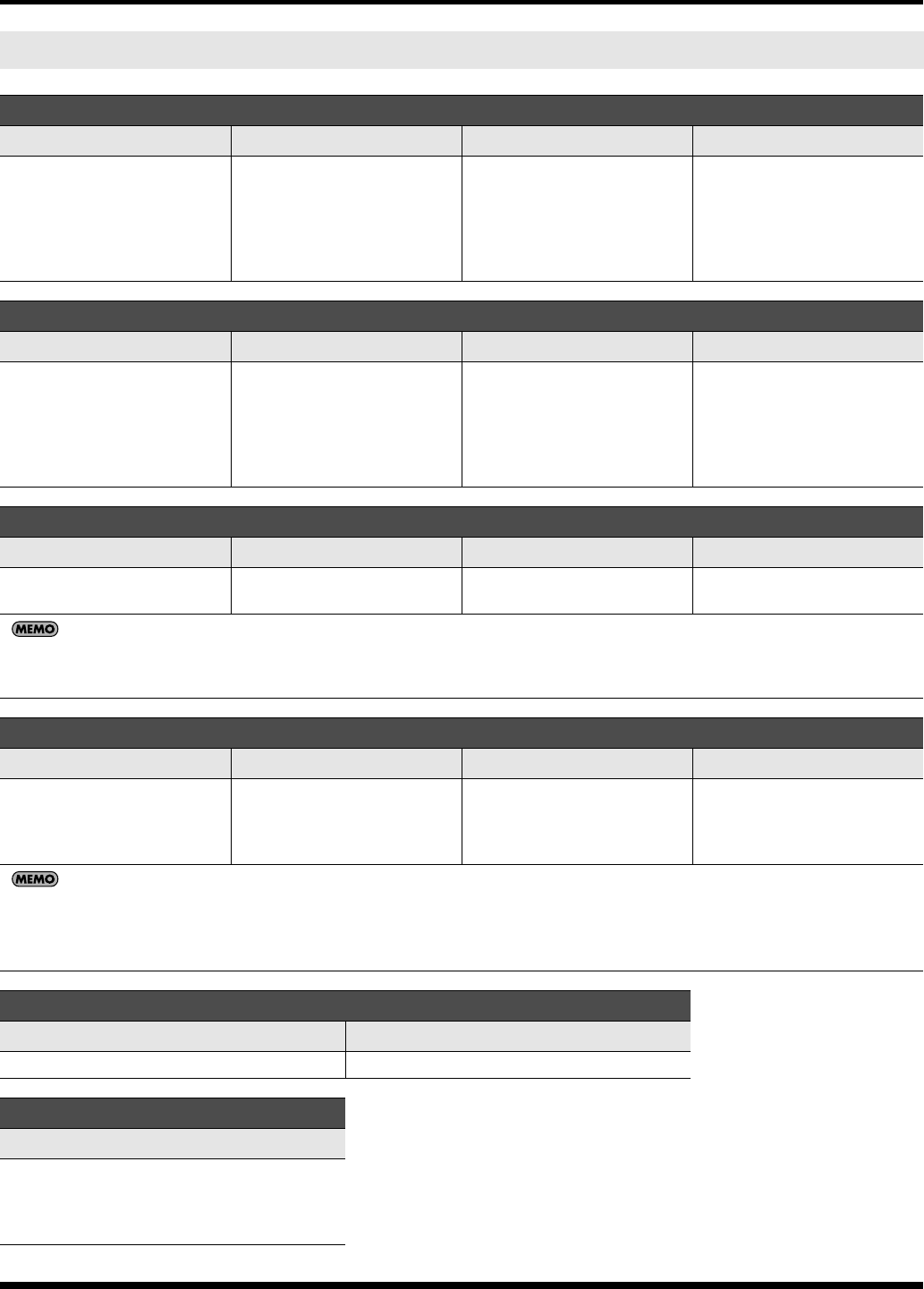
16
Playing <Basic Operation>
Harpsichord samples courtesy of the Hamamatsu Museum of Musical Instruments.
Tone List
French
[8’ I] [8’ II] [4’] [Lute]
The sound of the lower key-
board 8’; this is the basic tone
of the harpsichord.
The sound of the upper key-
board 8’; this is the distinc-
tively bright sound of when
the plectrum is located closer
to the bridge.
The sound of the lower key-
board 8’, one octave higher.
The sound in which the up-
per keyboard 8’ is muted. The
name reflects the similarity of
this sound to that of the
plucked string instrument
called the lute.
Flemish
[8’ I] [8’ II] [4’] [Lute]
The sound of the lower key-
board 8’; this is the basic tone
of the harpsichord.
The sound of the upper key-
board 8’; this is the distinc-
tively bright sound of when
the plectrum is located closer
to the bridge.
The sound of the lower key-
board 8’, one octave higher.
The sound in which the up-
per keyboard 8’ is muted. The
name reflects the similarity of
this sound to that of the
plucked string instrument
called the lute.
Fortepiano
[8’ I] [8’ II] [4’] [Lute]
This sound plays only the
first of the three strings.
This sound plays only the
second of the three strings.
This sound plays only the
third of the three strings.
This is the sound of a two-
string fortepiano.
• Layering the three sounds [8’ I]–[4’] will produce the basic tone of a fortepiano.
• Layering the two sounds [8’ I] and [Lute] is one of the recommended sound.
Dyna Harpsi
[8’ I] [8’ II] [4’] [Lute]
The sound of the French type
lower keyboard 8’, with
touch sensitivity.
The sound of the French type
upper keyboard 8’, with
touch sensitivity.
The sound of the French type
lower keyboard 8’ one octave
higher, with touch sensitivi-
ty.
The sound of the French type
upper keyboard 8’ muted,
with touch sensitivity.
• The [4’] sound is not heard when you play with a soft touch; it will be heard when you play strongly. This sound is not
used on its own, but rather in combination with [8’ I] or [8’ II] to create a more brilliant sound.
• The [Lute] sound is normally used by itself.
Positive Organ
[Organ I] [Organ II]
The sound of the Rohr Flute 8’ The sound of the Principal 8’+4’.
Celesta
[Organ II]
The Celesta produces a distinctively charm-
ing sound by means of a mechanism that uses
hammers to strike metal bars when you play
the keyboard.
C-30_e.book 16 ページ 2008年3月10日 月曜日 午前10時31分


















